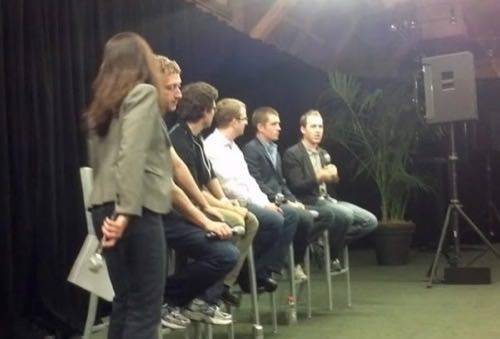The changes that Facebook is making to the profile via the Timeline and media sharing are some of the biggest to ever come to the platform. Yesterday at Facebook’s developer confererence, f8, CEO Mark Zuckerberg said with a smile, “We have been working on this for a year, we are extremely excited.”

The Timeline, with its new media and lifestyle sharing features is a significant boost to Facebook’s social graph. What Zuckerberg announced yesterday was the equivalent of putting the Open Graph API on steroids. That is good for Facebook and good for users, to a certain extent. But claims of invasion of privacy by Facebook and its ecosystem will skyrocket as well. What will Timeline do to user privacy and how will users respond?
Timeline’s Metered Rollout
After the f8 keynote, Facebook’s top executives sat down for a press conference with Silicon Valley’s pool of tech reporters. Inevitably, the questions turned to privacy.
“It is not like people are going to log in one day and everything has changed on their profile. The last profile redesign we did we spent a couple months rolling it out by giving several weeks of a window to opt in,” said Facebook’s head of product Chris Cox. “Because early adopters were able to play with it and explain it to their friends, it became an easier process to get through. That is what we are planning on doing here. We are basically helping you take over more of your page and tell more of your story. It is completely under your control what is there and what is not there.”
What Facebook wants you to believe is that all your data in completely under your control. For the most part this is true and has always been true. Your social networking data consists of what you do and do not share. Yet, the consternation of privacy advocates is how Facebook acts on that data once it has been shared.
The River of Data In the Open Social Graph
The “Like” button brought sharing and the Facebook social graph into the wild Facebook. Facebook, like Google before it, all of a sudden had its tendrils deep within the backbone of the Web. “Read, Watch, Listen” is going to take that a step farther. What many users do not often know is that when a website puts a button on a page (like the AddThis button from Clearspring, for instance), the company that publishes the button has insight into everybody that visits that site, regardless if they click the button or not. Facebook is likely no different. They are working on traditional data via the Like button but also the social graph data. Facebook knows more about its users than even the most paranoid privacy advocates think.

That does not mean that users should worry. This type of stuff has been happening for years. At the same time, Facebook is giving users more control over the information they share, the information they see and how that information is spread. Zuckerberg would no doubt love that Facebook be completely open, all the time, but that is not a realistic scenario. With the subscribe button, new filters and inline sharing options, Facebook is trying to give users as many privacy options as possible while still maintaining the line of the “open” social graph.
Inline Sharing and “Transparency Control
“This is actually, I think, a really big step for transparency control on Facebook,” said the company’s CTO Bret Taylor. “We have been working with a number of privacy groups on this process of developing a product.”
There are several items with Timeline and open graph apps that Taylor said would give users more control.
“The first thing is the new authorization dialogue you get when you install an app. One is that you will see screen shots of exactly what the app is going to look like on your profile,” Taylor said. “With the old dialogue it is really easy to read the text and analyze it. In practice we have seen that a lot of people give it a cursory glance and click a button. By displaying visually what people we think that people are going to give a lot more thought into what they are doing when installing apps.”
There are also inline privacy controls on Timeline, the same way that Facebook has issued new privacy controls across the entire site. That is not going to change because of Timeline. It will also apply to apps. So, if you install the Spotify music widget but only want a couple friends to see what you are listening to, that can be done through the new inline controls.
“Everything is inline,” Taylor said. “You don’t need to learn some privacy settings in a page somewhere to actually be able to change your privacy settings. So, we are really excited about that aspect of the product.”
So, privacy at Facebook really comes down to two fundamental aspects: 1) how the company shares and acts upon data within the open social graph and 2) the surface-level user experience as dictated by inline privacy controls. From a superficial point of view, Facebook has given users options and filters to control who sees what and how. Yet, the deep river of data that Facebook holds on its users through the open graph is what scares privacy pundits.










